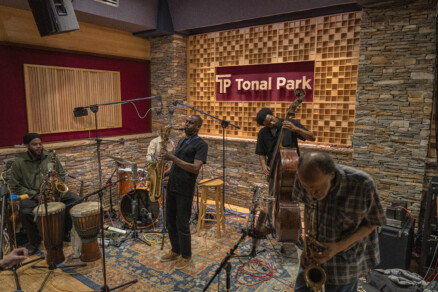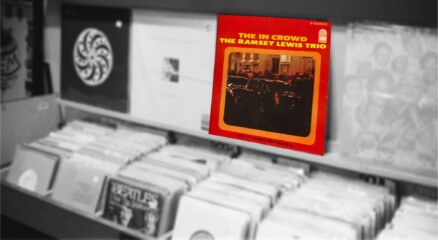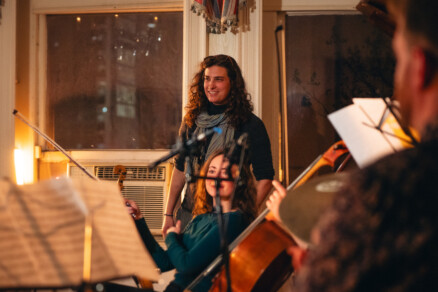Chosen: How Bernice Johnson Reagon answered her call

Bernice Johnson Reagon had a way of letting the ancestors speak: Be humble and let go of ego. Ground yourself in their view of the world, how they saw things. Then listen. And sing together. Though she might have become a frontperson in any iteration of the paths available to Black vocal talent of her era, she chose this.
She was chosen for this.
An organizer, arts administrator, historian, musicologist, composer, leader, teacher and founder of the a capella Black women’s ensemble, Sweet Honey In The Rock, Reagon’s most enduring role — and reason for touching all of these areas — was to be a vessel, a conduit. Her sound moved us because she listened. And we became not only hearers but doers. She is now an ancestor, part of that chorus that she dedicated her life to archiving and remembering.
On May 16th, at Strathmore’s Music Center, those who continue to listen will gather to sing and honor the ways she listened. Curated by Reagon’s daughter, Toshi, the program “Over My Head, I Hear Music in the Air” will feature Terri Lyne Carrington, Lizz Wright, and members of the SNCC Freedom Singers, among others.
Reagon was no stranger to folk who believed that some people have a “call” on their lives. The daughter of a preacher, she was born into the Black world of Dougherty County, Ga. in 1942. She grew up in a church setting where everyone participated in song together. Sure, there was a leader, but it was the call-and-response and long meter form that made their function matter. The song leader was not a soloist; as Reagon once lectured, they only raised the song. It was up to everyone else to see what the end was gon’ be. This was a 19th-century (and earlier) tradition that Reagon would, later, fully flesh out in her scholarship. But then as a young child, this sound was shelter in the time of storm, help in the time of trouble. Black people sang together to fortify themselves.
By the time she was eleven, gospel had taken the community by storm. Though choral music was not new, the rural South was about “a decade behind” when it came to the newest sounds coming from the cities and points up north. With her sister Fannie, Reagon would listen to the latest gospel songs on Sunday mornings coming from Chicago. Explaining its roots as the music that came of age among Black migrants to urban Northern settings, the explosion of gospel in Dougherty County was a return.
The sisters soon organized a choir with Fannie playing piano. It was from here that Reagon would learn the practice of arranging, taking musical foundations and reworking them into new forms of organized sound. The embrace of the gospel choir relegated the older 19th century sounds to the period of church service known as devotion, which prefaced Sunday worship. But there would be many returns for Reagon.
Choral music afforded a young Reagon the opportunity to organize and build the social connections that followed her to Albany State College in the early 1960s. She would soon join the Albany Student Movement, which directly confronted Jim Crow. The Student Nonviolent Coordinating Committee (SNCC) had been founded in 1960 and soon targeted Southwest Georgia as a place to foment direct action struggles. The county seat of Dougherty, Albany was more urbane than the surrounding smaller towns and other countries where the Klan and white violence was more visceral. But nowhere was safe.
It was at a tense mass meeting following a march in support of suspended students that Reagon was asked to sing. The song that came to her was “Over My Head,” but instead of singing the lyrics, “I see trouble in the air,” she replaced the word trouble with “freedom.” Though it was far from the first creative revision of a Black song to suit the struggle, this birthed a new moment in both the movement and music. Reagon would later write, “Singing in the movement changed the way I sang and why I sang.”
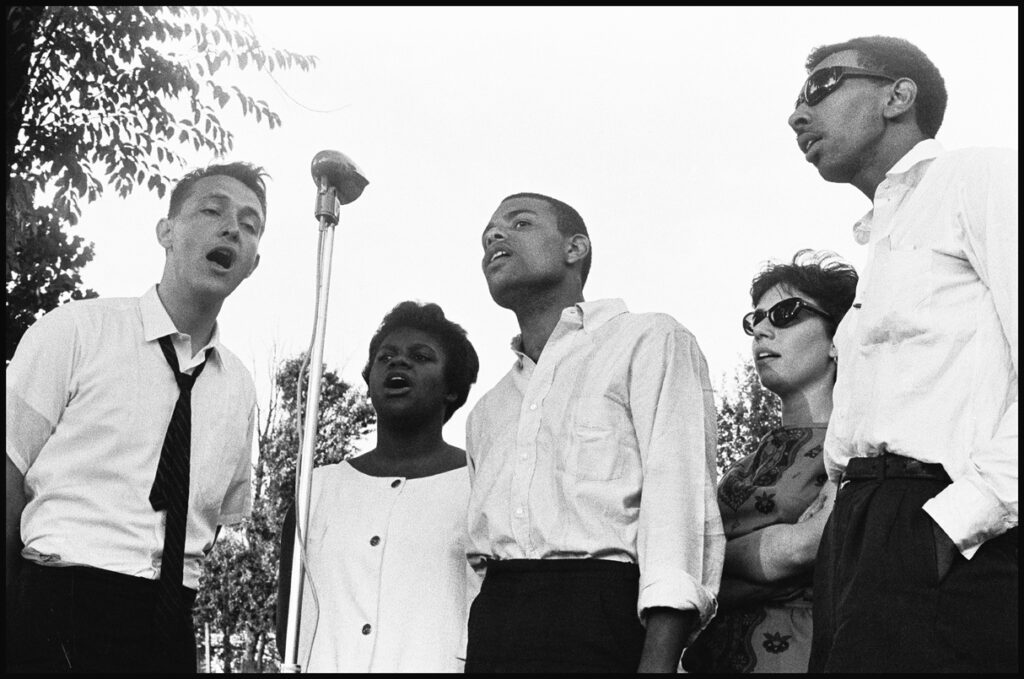
Within a year, the SNCC Freedom Singers was founded. Touring the country, they brought these and other freedom songs to audiences that ranged from celebrity-activists to ordinary people wanting to learn more about the Southern-based struggle. Joined in this effort were SNCC comrades from the Albany struggle, including Charles Neblett, Bertha Gober, Rutha Mae Harris, and Cordell Hull Reagon, who would become Bernice’s partner.
The Freedom Singers were also deployed in the depths of the South, where the occasional spark was needed. Lest we believe that this religious music was made more secular by its use as protest songs, Reagon’s notion of spirituality explodes this binary. In Hands on the Freedom Plow, she recalls how she came to understand the song, “This Little Light of Mine” anew:
I heard the text in some of the old prayers, and it felt as if they were saying exactly what we were going through. ‘Lord, you know me, you know my condition, and I’m asking you to come by here and see about me’ was prayed every second Sunday in Mt. Olive Baptist Church, No. 2, by the mother of the church. But when she did it in a mass meeting just before a march, those words named our situation. It was like an amazing light of understanding opening up within me. That prayer, which had sounded old, was new and immediate; it was about us pressed down by racism and wanting the power in the universe to be with us as we marched. I became more aware that there are different kinds of knowing. You can know a lot of data, but sometimes the journey you walk with your life allows you to really know what in this case, a prayer is expressing. Your understanding is deepened because you have been changed by the path you are now traveling.
So when she heard jazz for the first time in New York, she knew exactly what was happening spiritually and why the music resonated. One of the biggest coups of SNCC’s fundraising efforts was a 1963 benefit concert that featured among many others, Charles Mingus and Thelonious Monk. It was a rare glimpse into Monk’s political leanings. Here he was at the height of his artistic power, making time for student radicals — even as he was unsure about the whole idea of nonviolence. Reagon recalled this encounter at a lecture many years later:
We went out to this restaurant. Thelonious Monk is this big brooding sort of [man]. And there’s a darkness around him if you’re close to him. … I was sitting in front of him, and I was sort of scared of him. And he said, ‘That stuff, it’s not gonna work. That stuff you all are talking about, it’s not gonna [work]. I mean, it’s important and I’m here.’ And it was the nonviolence, the ‘redeeming your enemy through love’ kind of part.
This was a sensibility that existed among many in the local communities of Southwest Georgia. Monk was only reflecting something SNCC activists were used to hearing. Monk spoke to Reagon less than a year before John Coltrane would write “Alabama” in response to the 16th Street Baptist Church bombing. Still, for SNCC veteran Charlie Cobb, the idea of nonviolence was far more complicated than the simplistic schoolbook history narratives of the movement that we have received. Folk organizing in the South were rarely unarmed.
The same complexity of tactic attaches to the capacity of the freedom song to coalesce forces of resistance. Reagon’s voice was a weapon.
By the end of the 1960s, SNCC had ended its operations, and Reagon found herself living in Atlanta, where she encountered the spirit of Black music through the horn of Pharoah Sanders: “I was living in Atlanta, Ga., when the Pharoah Sanders masterpiece recording “Karma” was released. Now, my field is Southern Baptist vocal and 19th century congregational, but there was in the voice of Pharoah Sanders’ tenor sax a texture and quality that resonated with me. For a time after I first heard this recording, every Sunday morning, I would get up and start my day with “The Creator Has a Master Plan.”
And then in an 1976 essay published in Sing Out!, Reagon wrote: “Jazz had not been a strong part of my musical life. I began to hear it as I traveled north. Thelonious Monk and Charlie Mingus played on the first SNCC benefit at Carnegie Hall. I heard of and then heard Coltrane. Then I began to pick up the pieces that had been played by Charlie Parker and Coleman Hawkins and whole lifetimes of music. This music had no words. But, it had power, intensity and movement under various degrees of pressure; it had vocal texture and color. I could feel that the music knew how it felt to be Black and Angry. Black and Down, Black and Loved, Black and Fighting.”
The archives surely contain more interesting convergences between Reagon and the improvised music of the era. What can be said emphatically, however, was that jazz easily reminded her of the sacred tradition that grounded her life, and the political struggle for which she sacrificed.
This combination of musical openness and political courage would conspire to make Reagon a formidable figure for the next forty years. By the time of the Sing Out! article, Reagon had moved to Washington, DC, finished a PhD in history at Howard University, founded Sweet Honey In The Rock, and began a job at the Smithsonian Institution focusing on bringing the African diaspora into the annual Smithsonian Folklife Festival.
At Howard, Reagon dove headlong into the study of African diaspora history, part of an era in the Department of History that produced scholars like Sharon Harley and James Counts Early, who would soon join Reagon at the Smithsonian — and, as Early recently told me, to at least one Betty Carter set at Blues Alley. Every student from that era seemed to have some connection to movement work. They chose history in part to clarify the terms of what might be done next. For Reagon, that involved a deep exploration of the freedom songs, as a form of historical knowledge. She completed a dissertation in 1975 entitled “Songs of the Civil Rights Movement 1955-1965: A Study in Culture History,” which simultaneously upended historical methodology — a song could be a source, now — and set the intellectual terms for any future understanding of music and the movement.
I wanted to feel and hear their soul in the singing.
Reagon’s idea for Sweet Honey In The Rock came prior to her graduation from Howard. As she relates in her historical notes in the 1993 volume, We Who Believe in Freedom, “I became the vocal director of the D.C. Black Repertory Company (the Rep). The group Sweet Honey In The Rock was to come out of my vocal workshops.” With the students at the Rep, Reagon developed a philosophy of arranging and organizing that felt both like her recent work with SNCC and the sacred song tradition of her ancestors, where everyone was invited. But, as Reagon recalls, there were “rules:”
Some of my students came into the session with a sense that they could sing, but with little awareness of singing as a discipline, as a philosophical guide and a force in one’s life. To them, singing was a product; any way you got to the sound you wanted was okay. I discovered it was not okay with me. I searched in myself and in the song that we created in our workshop for an honesty and integrity of sound that many of my workshop participants knew nothing about. They would give me melody, harmony, rhythm, and style, and I kept asking for the rest of it. I wanted to feel and hear their soul in their singing.
This is what created the distinctive sound of Sweet Honey In The Rock: the notion that no single person was more important than the collective spirit. “Sweet Honey In The Rock,” she argued, “was a woman who was always the total of the individual women who moved to the stage lending our all so that she could be.”
This collective ideal of womanhood was the perfect icon for the moment of the 1970s when Black women sought models that represented their mothers — the “women who could carry their weight, theirs and everybody else’s,” as Reagon put it.
For the next few decades, Sweet Honey In The Rock would keep a consistent touring schedule and produce a discography featuring Reagon’s expansion of the freedom song to the question of just who Black women really were. Coupling this increasingly militant assertion to a larger ethos of anticolonial and anti-imperialist concerns — even as she was technically still employed by the federal government — Reagon’s moral and spiritual center allowed her to use song in the ways she always used the song: to speak to the spirt and point the route to freedom, even if it meant supporting movements and positions to the far left of the American neoliberal mainstream. Compositions like “Ode to the International Debt” joined foundational pieces like “Joan Little,” to place Sweet Honey In The Rock squarely in what Erica R. Edwards calls the post-intelligence code. Black women were the key to unlocking the violent ways 1980s America defined itself as the leader of the free world.
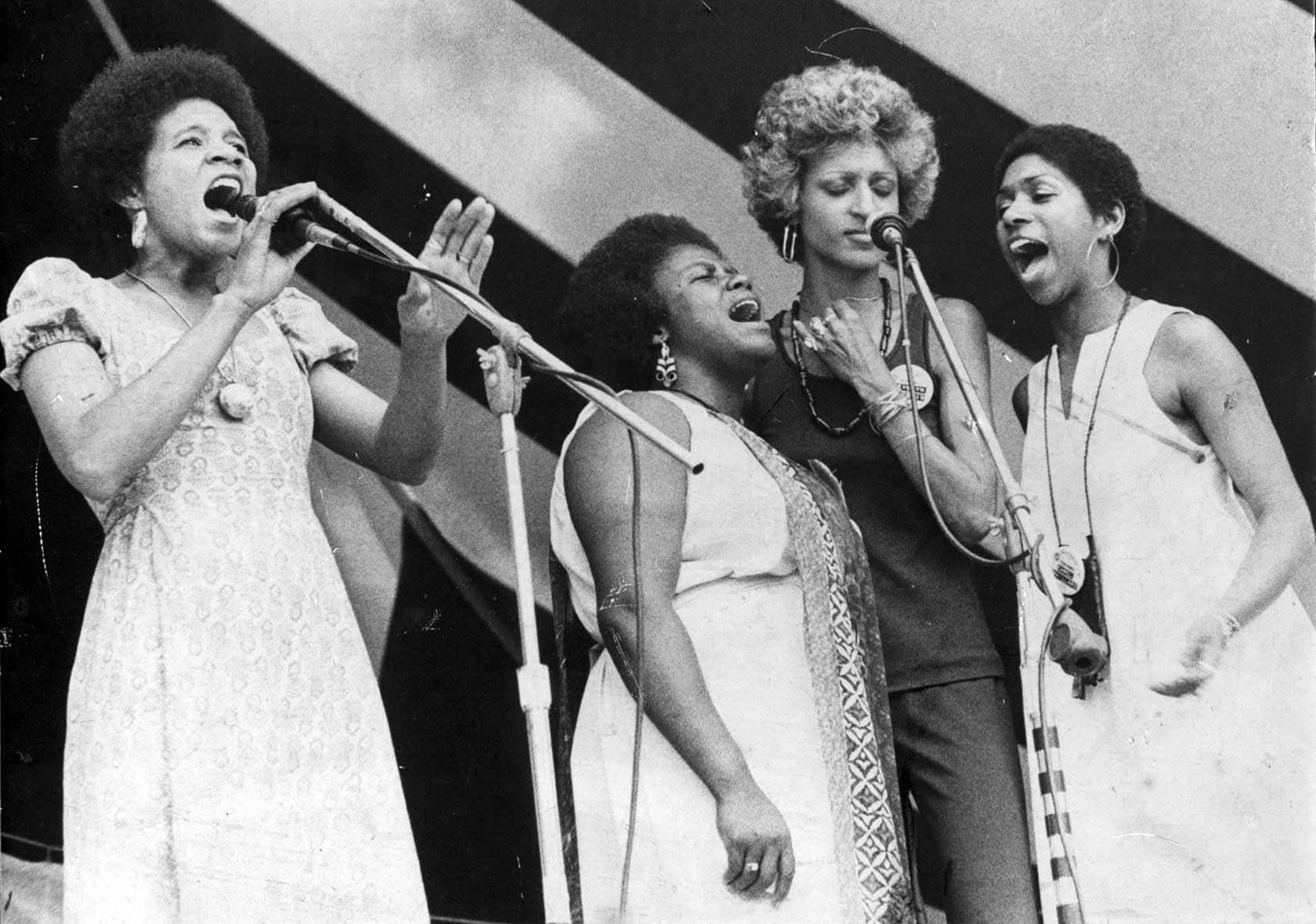
In her powerful 1981 talk “Coalition Politics: Turning the Century” included in Barbara Smith’s Home Girls, she made plain the meaning of her notion of womanhood
It must become necessary for all of us to feel that this is our world. … And watch that ‘our’ — make it as big as you can. … The ‘our’ must include everybody you have to include in order for you to survive.
This was also the generation for musicology’s reckoning. And Reagon used the Smithsonian’s Folklife section to platform the scholarship that would become ethnomusicology, an attempt at taking Western musical convention to task for its practices of exclusion. But more than correcting a wrong, Reagon’s work of reimagination was about letting Black music live. As a tradition of the folk, the sacred song did not have to qualify as “music” in the Western sense in order to be valid.
Reagon would eventually move to the National Museum of American History, where she founded the Program in Black American Culture. A precursor in many respects to certain elements of the Blacksonian, Reagon’s work consistently documented the tradition of Black sound. The liner notes she penned for many of the Folkways albums, reflects that just as the concept of womanhood had to expand, so too the meaning of the folk and the sacred.
In her Peabody-awarded 26-part Wade in the Water — a radio documentary for NPR — Reagon included two episodes chronicling a jazz idiom that stretched from New Orleans Brass Bands through Duke Ellington and Mary Lou Williams to John Coltrane, Rahsaan Roland Kirk and Sun Ra, and the orisha music of the Afro-Cuban world, united not by “style” or “era,” but by its relationship to the sacred.
This is Reagon’s ethos: gathering it all together, arranging so you know what it is when you see it again, and letting it speak on its own terms. The it is all of the sounds that move us, but the sound is spirit. And it is often telling us to go where it sends us. Stand up and fight. Remember and believe. Freedom is calling our name.


